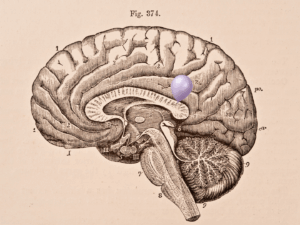What is fluoride and why is it controversial?
Fluoride occurs naturally in the mineral fluorite, or fluorspar.
It has revolutionised dentistry during the last century.
Our teeth didn’t evolve to eat the hyper-processed diets we consume these days. This is why we get more cavities than our ancestors.
Most commonly, fluoride is used in toothpaste and public drinking water – a process known as fluoridation.
IT’S NOTHING NEW
Fluoridation emerged after an American dentist noticed people with brown splotches on their teeth in Colorado Springs. Despite the rotten appearance, the local people’s teeth were inexplicably resistant to decay.
The dentist learned that the mountains nearby were full of fluorspar, so the drinking water was naturally high in fluoride.
By the 1950s, word had spread and water fluoridation was occurring globally, including in Australia.
It didn’t take long for fluoridation to encounter resistance.

Credit: Ervins Strauhmanis (https://flic.kr/p/NCqHbw)
CONSPIRACY?
Theories appeared in the 1940s that fluoridation was some type of socialist or communist conspiracy. This idea was also trendy amongst osteopaths, chiropractors and those campaigning against vaccinations.
It seems that any mass-administered public health initiative will be met with some scepticism, but scepticism about fluoridation has been particularly enduring. Why?
Well, there are negative effects of consuming too much fluoride.
Extremely high amounts of fluoride ingestion is toxic to people, research indicates.
However, it is very rare for anyone to be exposed to enough fluoride to overdose or experience negative health impacts.

Credit: William Beutler via Stanley Kubrick (https://flic.kr/p/o5724h)
LINGERING DEBATE
Molecular pharmacologist Dr Ian Musgrave says recent concerns focus on the risk fluoride poses to children.
“A 2012 study reported lower IQ scores in children living in areas with very high natural fluoride levels,” says Ian.
“A subsequent review by the Australian NHMRC and a long-term follow-up study of Australian children found no effects of water fluoridation on IQ or other aspects of child behavioural development.”
Cases of overdose appear to be from people consuming large amounts of pure fluoride. Toxicity usually occurs in children who accidentally swallow mouthfuls of tasty, flavoured toothpaste.
In small, measured amounts, fluoride benefits dental health. It strengthens teeth and reliably rebuilds enamel.
For children, the effect is especially marked, and many years of research indicates fluoridation decreases childhood dental issues dramatically.
But while the science says it’s safe, the debate still lingers.

Credit: Postoak, Wikimedia commons (https://creativecommons.org/licenses/by/3.0/)









